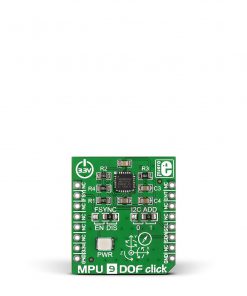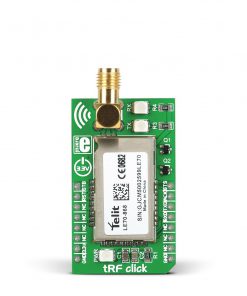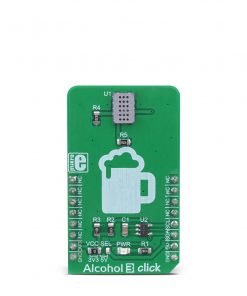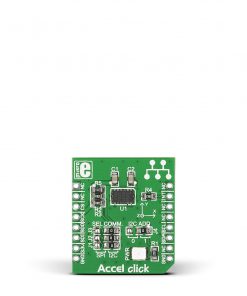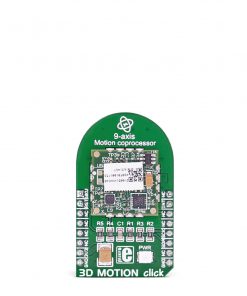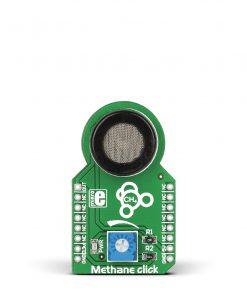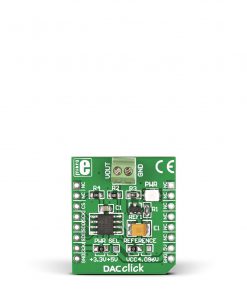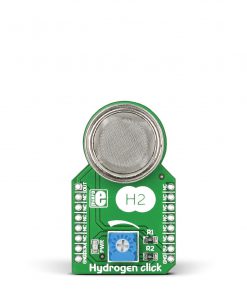DC Motor 10 Click
R515.00 ex. VAT
DC Motor 10 Click is a brushed DC motor driver with the current limiting and current sensing. It is based on the TLE 6208-6 G, an Hex-Half-Bridge / Double Six-Driver IC, optimized for motor driving applications. It can be operated SPI communication interface, allowing to drive the connected motors in three different ways: it can be used as a free configurable as switch, half-bridge or H-bridge, offering an additional speed control and direction options. The TLE 6208-6 G also contains a set of protection features, offering a very high level of reliability. Besides driving capabilities, DC Motor 10 click can also sense current consumption at its output.
DC Motor 10 click is supported by a mikroSDK compliant library, which includes functions that simplify software development. This Click board™ comes as a fully tested product, ready to be used on a system equipped with the mikroBUS™ socket.
Stock: Lead-time applicable.
| 5+ | R489.25 |
| 10+ | R463.50 |
| 15+ | R437.75 |
| 20+ | R421.27 |

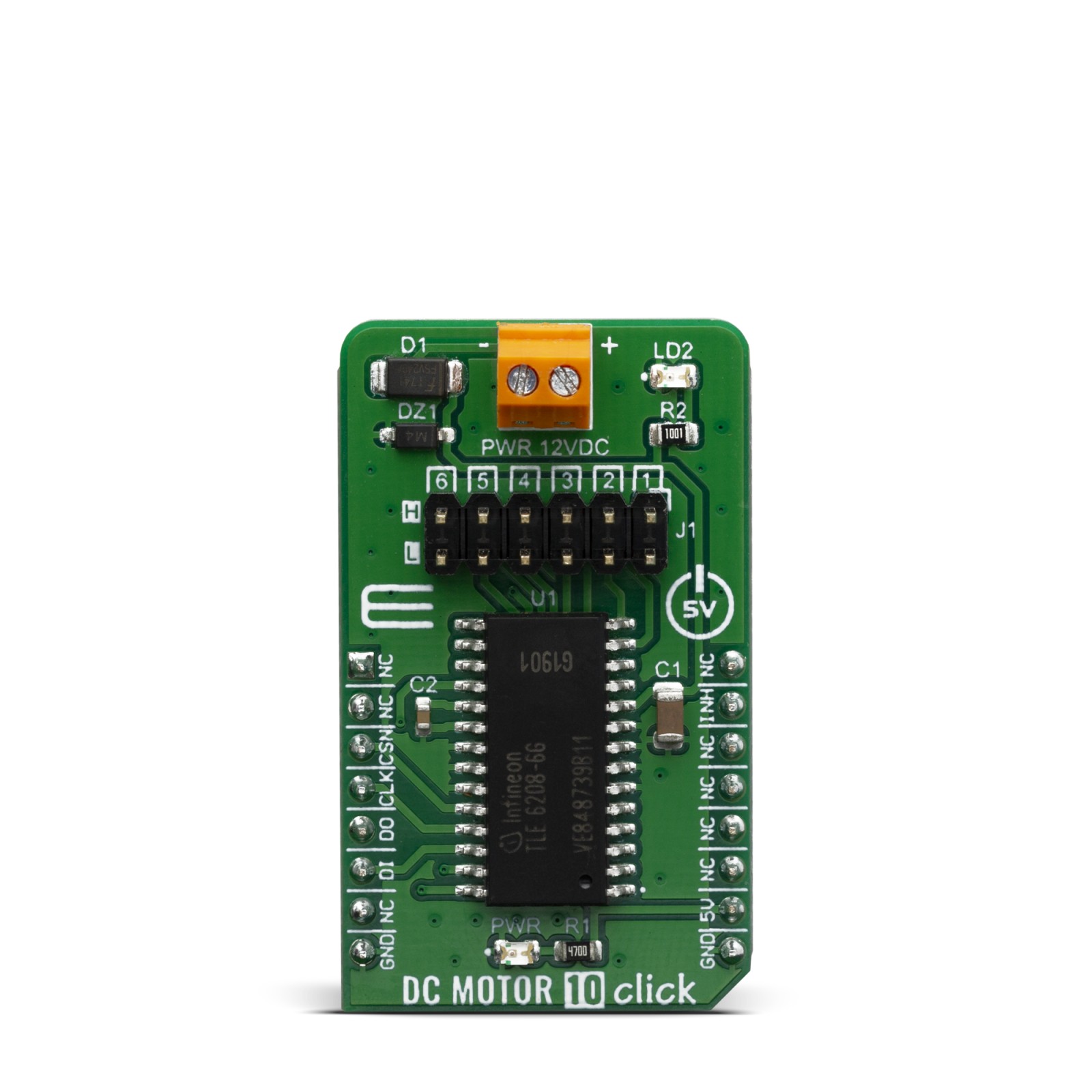
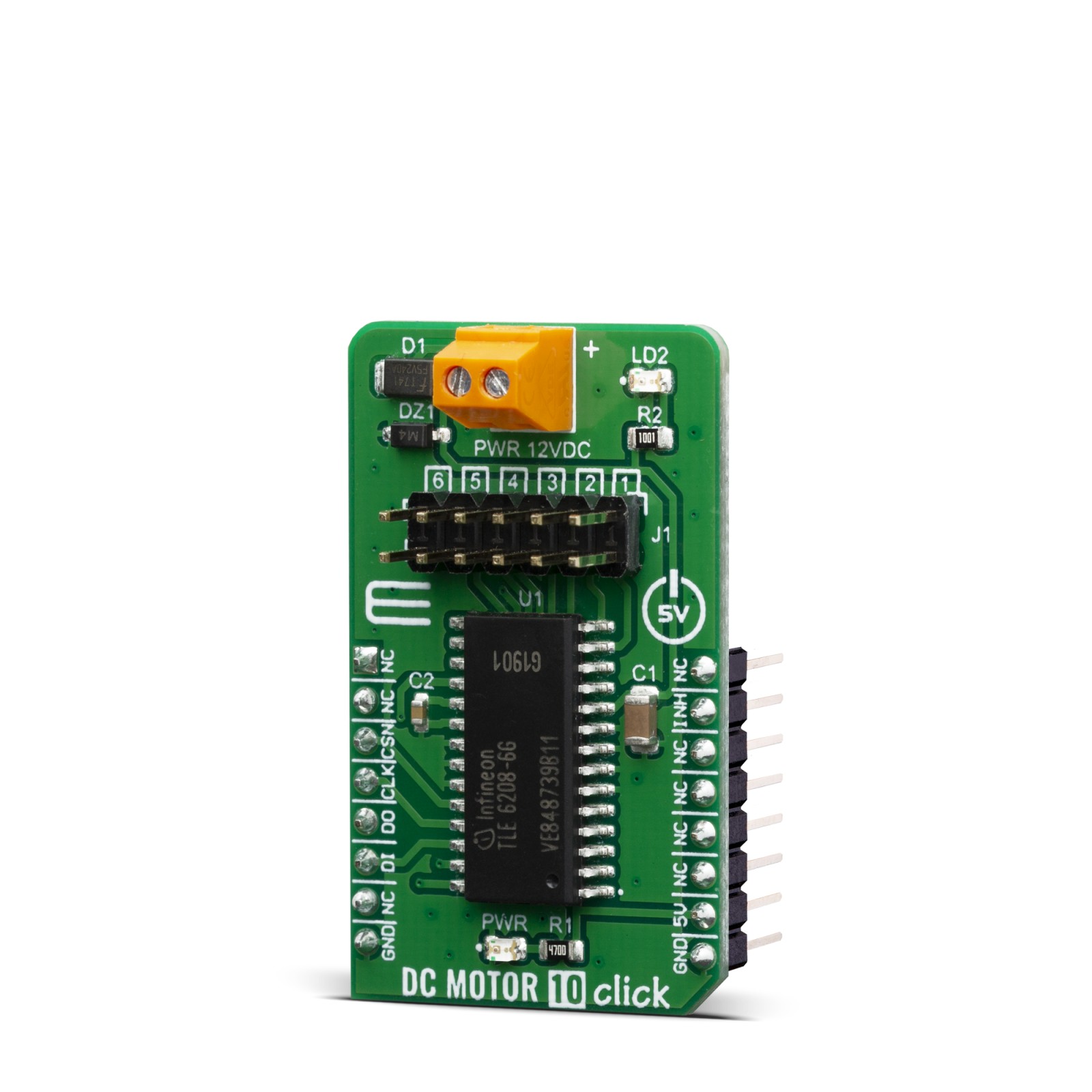

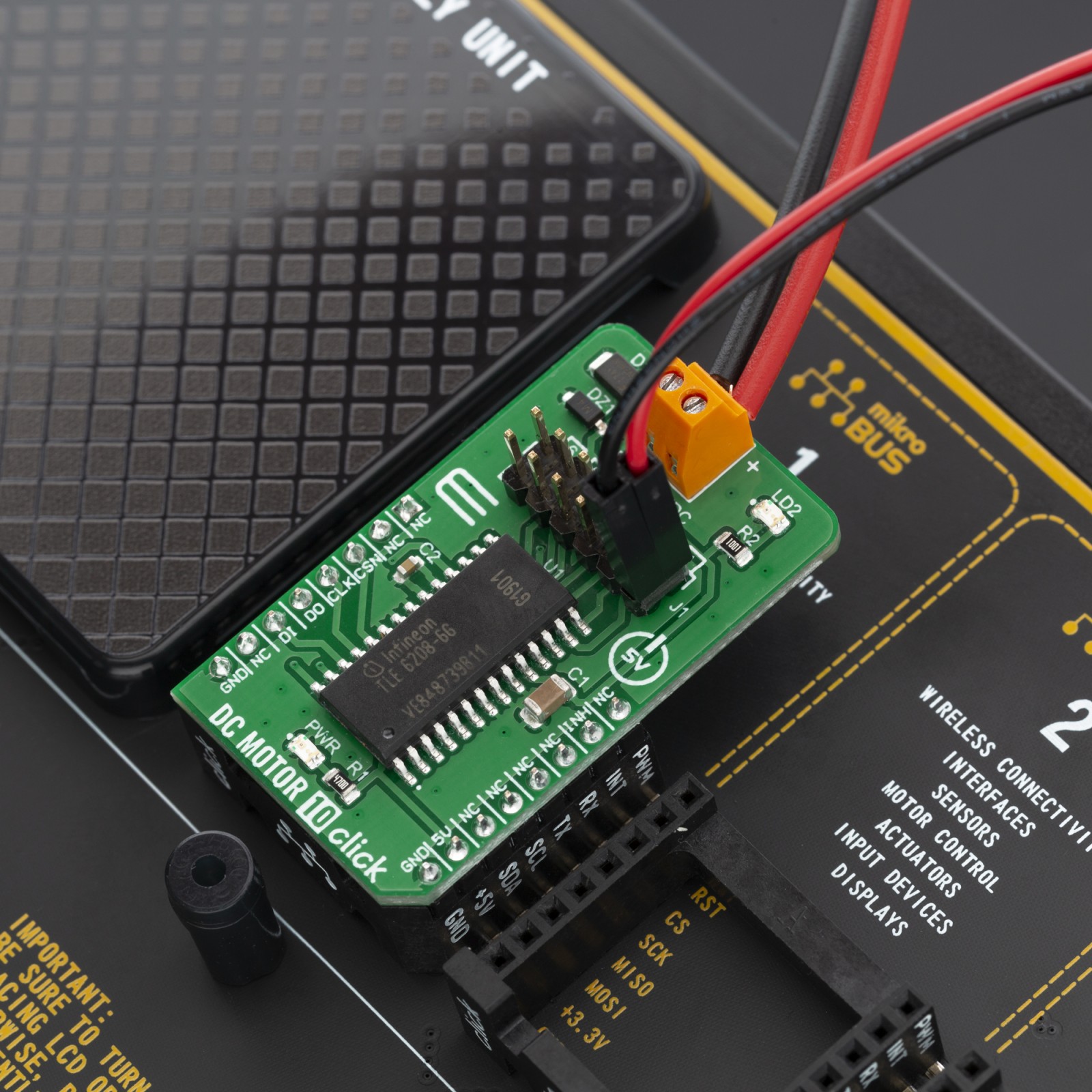

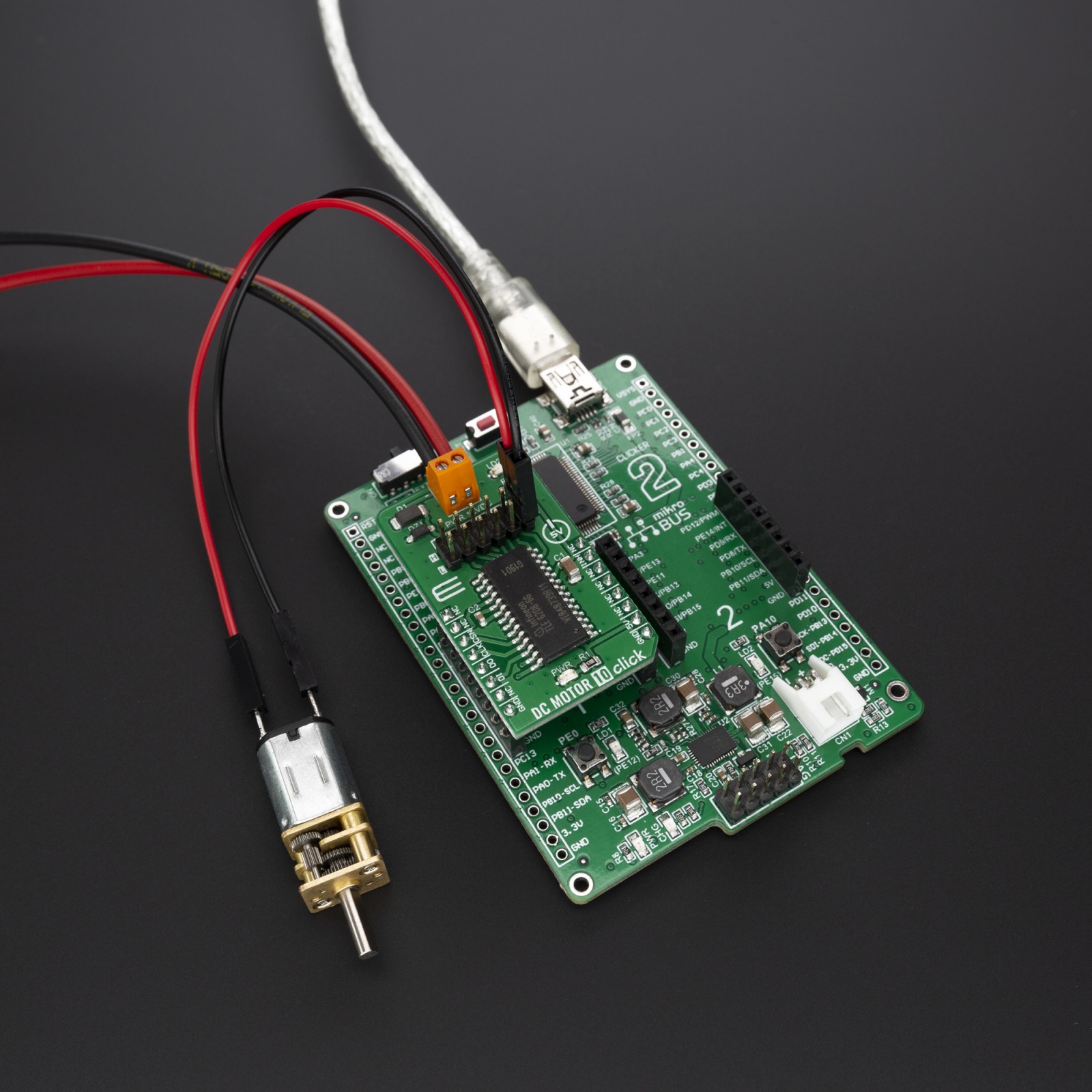
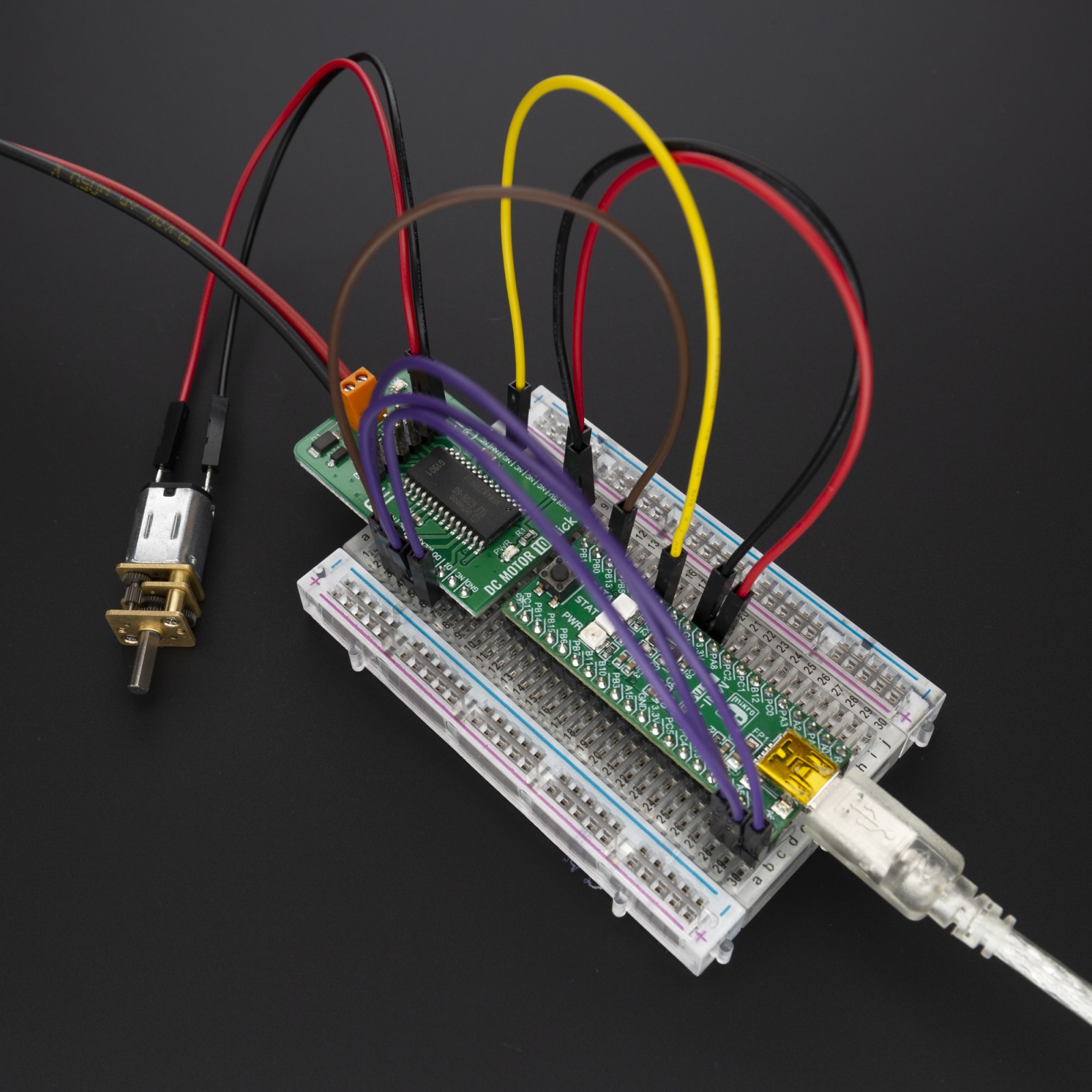
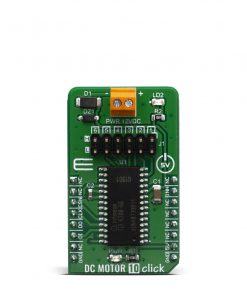
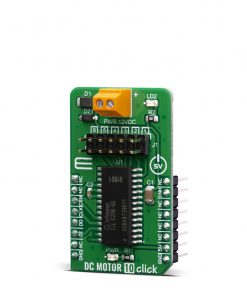

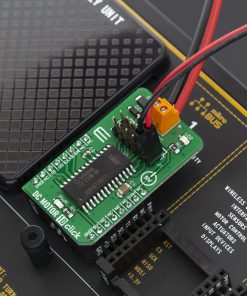
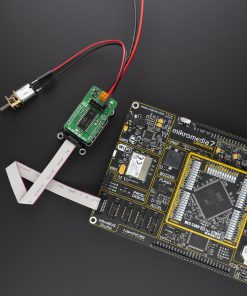
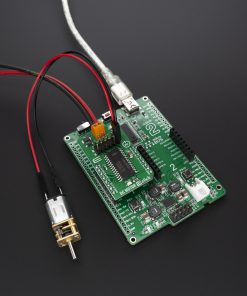

.jpg)

